April 10 - July 11, 2010
 |
| Frank Stella, American, 1936 -, Bethlehem's Hospital, 1967, Lithograph, Eliza S. Paine Fund, 1974.118 |
Minimalism was a style of formal simplicity, an art meant to calm the senses and stimulate the intellect. Instead of depicting nature, Minimalist artists found inspiration in mathematics, geometry, even language. They developed images in reasoned sequences of thought, like mathematical proofs. The style reacted to the heightened emotion and entropy of Abstract Expressionism. An important event for the style came in 1958, when Frank Stella set out to create impersonal, abstract images. He penciled straight lines on raw canvas and filled alternating spaces with black house paint. To give the works dimension, he mounted them on deep stretchers. Later he considered the same ideas in lithographs. Stella's “Black Paintings” prompted Donald Judd and Sol Lewitt to conceive a new kind of art object between painting and sculpture. Their “primary structures” were simple shapes often repeated in series. They avoided expression and personal touches, emulating the assembly line. To remove themselves even further, the Minimalists had commercial fabricators execute their works. This exhibition demonstrates how printmaking attracted Minimalists for its technical complexity, its collaborative processes, and serial products. They used lithography and screenprint to create flat colors with mechanical precision. Etching engaged the artists for its association to industrial metalwork, and its drawn out processes that separated creator from product.
Geometric imagery and the integration of art and industry characterized the work of the Bauhaus, the German progressive design school of 1919-33. In the 1960s there was new interest in former Bauhaus teachers László Moholy-Nagy—who died in Chicago in 1946—and Josef Albers, who then taught at Yale. The current styles of optical art and conceptual art also influenced Minimalism. “Op” painters and printmakers created sensations of movement and illusions of depth with geometric designs and precise colors. Conceptualists gave more attention to the idea behind a work of art than to the object itself. Op artists tried to excite unconscious responses in their viewers' brains, while Conceptual artists invited them to perceive the concept behind an image, and recount the process of its creation.
| Select Images from the Exhibition | ||||
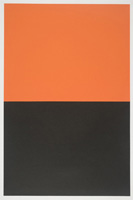 |
 |
 |
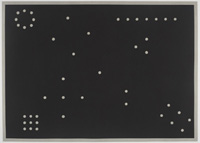 |
 |
 |
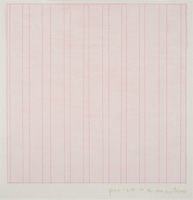 |
 |
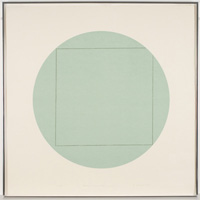 |
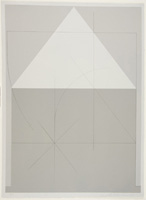 |

 Sign up for WAM eNews
Sign up for WAM eNews